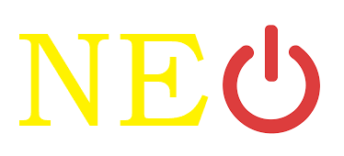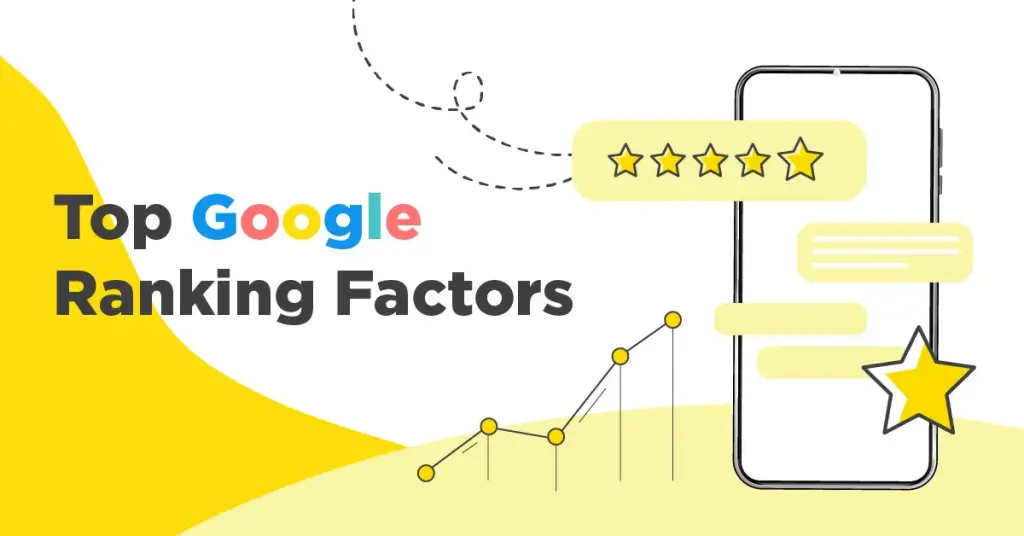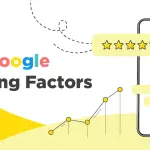What are Google ranking factors?
SEO is the process of optimizing your website to appear as high as possible in organic search engine results (yes, you can strive for the first page). When discussing search, the phrase "organic" refers to unpaid search results. This differs from the paid results obtained through PPC advertising.
Organic rankings on Google are decided by an algorithm that considers a variety of attributes and SEO metrics—these are your ranking criteria.
There are around 200 Google ranking factors, and while we will never know them all, we do understand many of them. We also know that while ranking variables and algorithms may fluctuate, the attributes Google is aiming to extract from them are expertise, authority, and
Types of Google ranking factors
Before we go into the top ten Google ranking variables for which you can optimize your website pages, let's first define the various types.
- On-page ranking elements refer to the quality of the page's content and the keywords it targets.
- Off-page ranking criteria are similar to recommendations from other pages on your site or other websites, and they generally consist of backlinks.
- Technical ranking criteria assess your website's capacity to be crawled, indexed, and rendered information swiftly and safely for searchers.
- Local ranking considerations include all three of the aforementioned, with a particular emphasis on reviews, reputation, and listings.
There is no single ranking criteria that can make or break your SEO. It is the culmination of all of your technical, on-page, and off-page activities that work together to help you rank higher in Google, increase traffic, and develop trust.
On-page Google ranking factors
The technical search engine ranking criteria listed above apply to your entire website, but the following ranking variables are page-specific—hence the phrase on-page SEO.
1. Relevant, high-quality content
The most crucial Google ranking element is the quality of your content. This is congruent with the production of high-quality material, user engagement, and specialty knowledge, as shown in the chart. So, what constitutes relevant, excellent content?
- It is trustworthy. The content is detailed, accurate, and informative, with no spammy links or comments.
- It is readable. That involves organizing logically, writing conversationally, and not stuffing keywords (Google will penalize you for this). Include it naturally on your page and utilize it interchangeably with relevant keywords.
- It has a new feel. Even the most evergreen content loses relevance with time. So, in addition to creating fresh material, you should update outdated pages with updated information and keywords that are important today. This is the key to keeping a high freshness rating.
- It corresponds to the intent of the keyword. In addition to using keyword research tools to determine what your ideal audience searches for online, make sure to search the keyword on Google to ensure that you understand what customers are looking for when they execute that search.
In a recent Directive poll, 78% of marketers cited keyword research as a high-impact approach for delivering new traffic. The research method enables you to better understand what your target audience is looking for and generate content that specifically meets these search queries.
2. Keyword placement
Once you've determined which keywords you want to rank for, you must arrange them strategically on your page. This includes:
- Title tag: aka meta title; the title that appears on the SERP
- H1 title: title that appears on the page
- H2 headings: aim for at least two
- URL: keep your URL short and clean as well.
- Naturally in the body: and also in the first 100 words
- Meta description: the blurb that appears below the title tag/meta title. Make sure it accurately sums up your page and gives searchers a reason to click. Google doesn’t always use the meta description you provide, but it’s still important to include.
3. Image optimization
- Assign alt text: This is the text alternative for a picture and the only way Google can "see" it. Be brief but descriptive, and include the keyword. This also makes your website accessible to visually challenged users who use screen readers to navigate the internet, and it will display if a picture fails to load.
- Compress and resize: Use an image compressor (tinypng is my fave) to minimize image file sizes to 70-100KB or less, if possible. Often, saving as JPG instead of PNG is beneficial. In addition, photographs should rarely be larger than 1,000 pixels wide. Though a responsive website will automatically resize images, the less requests your site makes to the server, the better the page speed.
- Add value: Instead of utilizing empty stock photos and graphics in your blog entries, use screenshots, samples, charts, and illustrations to demonstrate concepts. This enhances content quality and keeps viewers interested for longer.
- Include the keyword in both the alt text and the file name. And replace spaces with dashes in the file name; otherwise, your CMS will replace them with "%20", resulting in an untrustworthy-looking picture link.
4. Niche expertise
Not only is the quality of your material important in demonstrating expertise in your field, but so is the quantity of that quality content. For example, WordStream has been posting high-quality PPC content for a long time, and Google has come to regard us as a reliable source in this field. However, if we create an extremely high-quality post about, say, robotic process automation, our chances of ranking for that term are limited.
The hub and spoke method (also known as pillar page and cluster content) can help you expand your niche expertise. This strategy involves creating a hub/pillar page on a specific topic, which is typically a broad, high-volume term. This is the primary resource for that topic, and your H2s address distinct child keywords within that topic.
Then you have your spokes, or cluster content, which are supplementary pages that delve deeper into each of the characteristics (child keywords) mentioned in the pillar page.
In addition to displaying your experience in this field, this strategy improves your site structure, which we'll discuss later. Because the cluster pages link to and from the pillar content, as well as to each other, all of your links remain tightly grouped around the same issue.
Technical Google ranking factors
Because it requires understanding of website structure and content management systems, technical SEO is typically a collaborative effort between marketing and development teams. However, while this may appear hard, once your website is in good functioning order, there is little continuing SEO upkeep necessary. Here are some technical ways for boosting your ranking:
5. Page speed
Users anticipate a painless surfing experience, which is why page speed is a key ranking element. If your pages take too long to load, your bounce rate will rise and your ranking will drop. You can use GTmetrix or Google PageSpeed Insights to verify yours.
6. Mobile-friendliness
In 2019, Google announced that it would use mobile-first indexing on all new sites. This means that it ranks sites based on their mobile versions rather than desktop versions. Then, in 2020, it announced plans to make this the case for all sites, and by 2021, all sites would be subject to mobile-first indexing.
In other words, even if your website's desktop version is excellent, if it is not mobile-optimized, your search engine rating may suffer significantly. Most content management systems allow you to preview and adapt for mobile and tiny devices. You can also try Google's Mobile-Friendly Test.
In addition to these tests, you should always preview and test your web pages on a mobile device because code cannot detect some problems.
7. Core Web Vitals
While SEO trends fluctuate, ranking variables rarely alter. However, as part of the page experience change in 2021, Google added a new ranking element known as Core Web Vitals. Core Web Vitals measure a user's experience on your page, determining whether and how they interact with it. They include:
- LCP (Largest Contentful Paint): The time it takes for visible items on a page to load.
- FID (initial Input Delay): The time it takes for your page to detect the initial click or tap.
- CLS (Cumulative Layout Shift): whether there are unexpected movements and disruptive popups.
You can increase your Core Web Vitals by using lazy loading, code minification, picture compression, and other techniques.
8. Site security
Have you ever wondered what the s stands for in https (as opposed to plain old http)? Well, it stands for "secure." Obtaining an SSL (secure sockets layer) certificate is how you convert your site from http to https. There are several options for obtaining an SSL certificate, and the cost is determined by the amount of protection required as well as your hosting arrangement. HubSpot, for example, provides free SSL through their CMS.
9. Website architecture
As previously stated, search engines work by crawling and indexing various types of material on your website. Internal links are any hyperlinks that point to another page on the same website. The more organized and tightly-knit your internal linking structure is, the more points of access you provide to any given page, making it easier for search engines (and people) to find what they're looking for.
Ideally, any page on your website should be accessible in three clicks or fewer.
To accomplish this, you must be aware of the pages you are linking to whenever you create a new page or piece of content.
It ensures that search engines can readily understand and index the information. Topic clusters also improve the user experience. It makes your information easier to explore, and readers will notice that they don't need to visit many websites to locate what they're looking for.
Off-page Google ranking factors
Off-page ranking criteria involve entities other than your website, such as social media platforms, influencers, and other websites, but every off-page SEO plan revolves on one central focus:
10. Backlinks
Last but certainly not least, we have backlinks. A backlink is a link to your page from another website. A page with a high number of backlinks shows to Google that it provides outstanding value and is from a reliable source. However, one link from a quality domain is far superior to numerous connections from low-authority websites.
So, how do you gain backlinks? Here are four link-building strategies.
- Original, high-quality material: If your content is of great quality, unique, and adds value to your audience, it will produce backlinks by itself. Choose irreplicable content, such as thought leadership content and original data-driven pieces.
- Cold outreach: Building this level of authority takes years, so you'll want to build backlinks by locating comparable material and pitching the author for a link.
- Guest posts are another way to build backlinks. Instead of simply asking for a link, offer to write a piece for that website. You can put a link to your website in the article or in your author biography.









